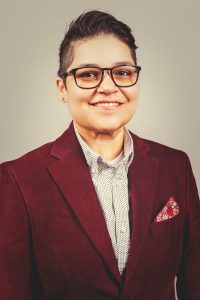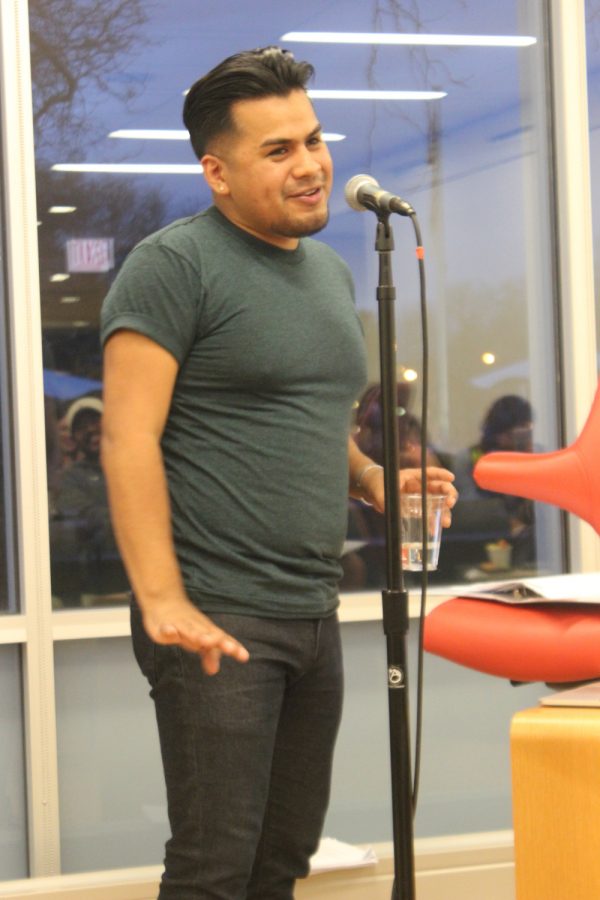By Christos Liardakis – Opinions Editor
Michelle Kuehlhorn – Staff Writer
Photo by Desiree Dylong
Photo by Desiree Dylong
Northeastern Illinois University (NEIU) hosted its fourth annual science symposium on Friday, Sept. 28, 2012. The symposium was brought together by the Student Center for Science Engagement (SCSE) which featured student research done in the areas of biology, chemistry, earth science and physics. Each person presented a research topic from SCSE summer program of 2012. When presentations on the podium concluded, students presented posters to display their research.
Podium presentations included research on the effects circadian rhythms have on preying mantises on registering light stimuli, presented by Edgar Mantes, Will Bogue and Andrew Urdialles. Kevin D. Gallaher also presented about research involving the characterization of a unique red-light photoreceptor found in a bacteria, Stigmatella Aurantica. Mairead O’Connor-Maleny presented her research on differentially linked sialic acids in H5N1 influenza and shared her thoughts about the importance of her research as she explains “Studying H5N1 influenza allows us to determine if there will be another pandemic like the swine flu back in 2009. Studying bird flu also allows us to see how bird flu can jump the species barrier from birds to humans.”
The first presentation was the “Relationship between Soil Properties and Erosion in a Stream Affected by Urban Runoff” by Danielle Whitfield. Her research was on storm runoff and parking lot drainage systems, which can have a strong erosive effect on the soil when the water is discharged into a small drainage channel. Soil properties may have an effect on storm runoff erosion patterns and could potentially affect stream restoration efforts. This study investigated soil erosion in a channel in a public forest preserve, starting at a culvert that opens from a parking lot drainage system. After graduating from NEIU, Whitfield is looking to become a middle school teacher with an interest in science.
“The First Analysis of the Electro-retinogram in the Praying Mantis (Insecta: Mantodea)” by Barabara Popkiewciz was the second presentation given. She researched various aspects of praying mantis behavior, extensive portions of which were focused on the unique object recognition abilities. They have undertaken a detailed analysis of the electroretinogram (ERG) in three species of mantis: Popa spurca, Tenodera a. sinensis, Sphodromantis lineola. Their data revealed the complex functional interactions between the cellular components in the mantis optic lobe and the general principles by which the insect’s visual systems operate. After graduating from NEIU, Barbara is going to medical school to be a neurologist and her interest in neurology link to the SCSE.
The third presentation was the “Can a Machine Learn to Distinguish Pollen Types, specifically Picea, Mariana and Picea. Glauca?” By Anthony A. Barkan. His research examined a machine that will learn about the pollen grain analysis and further machine learning projects using the methods devised during this research. If a computer can be trained to differentiate similar pollen types such as the spruce pollen P. mariana and P. glauca, then research involving machines learning to identify a new pollen samples will be validated. This research will gain significance worldwide as research on global climate change with biodiversity, oil and gas, and medical studies recognize the importance of pollen recognition. After graduating from NEIU, Anthony wants to become a Paleo-ecologist. He wants to attend California Berkeley. Anthony was not initially interested in pollen, but became interested in it after his summer research 2012 at SCSE. His main interests are pertaining to sediments and paleontological studies to find pollen that affected this area during the time of the dinosaur and over the last millions of years.







